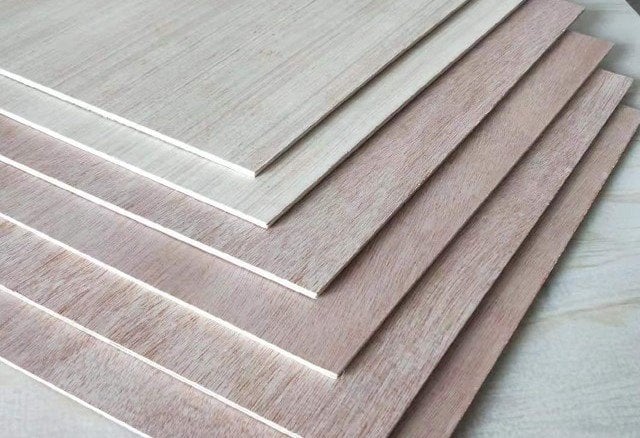November 26, 2025 | 02:23 GMT +7
November 26, 2025 | 02:23 GMT +7
Hotline: 0913.378.918
November 26, 2025 | 02:23 GMT +7
Hotline: 0913.378.918

Wood chips are one of the main export wood products to China.
The export and import turnover of wood between Vietnam and China increases steadily in recent years and reaches over US$ 2 billion by this time. However, it is wood materials that accounts for a large proportion.
Research groups of wood associations in Vietnam in collaborating with Forest Trends have published a report named “Wood trade between Vietnam and China2015-2020: Realities and Trends”.
In the report, trade of wood and wooden products between Vietnam and China kept increasing year by year in the period 2015-2020, and the two ways trade turnover increased from US$ 1.24 billion to over US$ 2.05 billion in 2020. Trade surplus was always on the Vietnam side but it is narrowing recently because of a strong growth in importing from China, with the average speed of 27% per year. In the meantime, the growth of exporting from Vietnam is much lower of that, with the average speed of 4.3% per year.
Wood exported from Vietnam to China is mainly wood materials, of which wood chips and wood planks account for over 90% of the total export turnover of wood and wooden products. Wooden products exported to China account for a small proportion. This shows that China continues to be a market that consumes mainly wood materials but not a market for wooden products of Vietnam.
The reason leads to this situation is the very huge market of China that attract a bold flow of wood materials into chains of production to serve the domestic demands. Another reason might be the impossibility of Vietnamese companies in producing and meeting the trends of the market for wooden products; or Vietnamese companies still lack the capability in competing with Chinese companies.

Plywood imported from China is growing very fast.
Wood imported from China is also wood materials, with the quantity and turnover increase strongly from 2018 up to now. Chinese wood materials exported to Vietnam are more variety than Vietnamese wood materials exported to China, that include of 4 types: plywood, laminated wood; peeled board, veneer; furniture; seat. The import turnover of these four types of wooden products accounts for over 90% of the total import turnover of wood and wooden products from China.
It is very much concerned recently that some imported wooden products grow rapidly that might create possibilities of commercial fraud, especially for plywood.
When there are trade tensions between the US and China, the US government applies new tax rules on Chinese imported wooden products. Depending on the specific product, the tax might reach up to over 200% or even much higher. The consequences are Chinese imported wooden products in the US reduce severely.
In this context, imported of plywood products from China into Vietnam soar, and in the meantime, Vietnam’s plywood products exported to the US also jump to a new height.
This immediately raises concerns about Chinese companies using Vietnam as a gateway, or in other words as Vietnam’s origin, to export their plywood products to the US in order to avoid the new taxes applied to them.
As a result, the US government opened an investigation on a number of companies exporting plywood products from Vietnam to the US.
Those are the reasons that make the research groups come to some conclusions: Supervising effectively the risks in trading of wood and wooden products between Vietnam and China, and controlling the commercial frauds in misleading the origin of wooden products imported from China into Vietnam play important roles to the stable development of the wood sector of Vietnam.
Translated by Khanh Linh

(VAN) An Giang promotes supply-demand connections, standardizes quality and builds value chains, creating a foundation for sustainable bird’s nest development and aiming to expand exports.
/2025/11/24/5339-4-nongnghiep-075331.jpg)
(VAN) Recently, the conference on 'Sustainable Fisheries Linkage Chain - Tilapia for Export' took place in Tien Hai commune, Hung Yen province.
/2025/11/21/4309-2-153400_128.jpg)
(VAN) Green and low-emission rice is paving the way for Vietnamese rice to enter high-end markets, marking the beginning of a transformation journey toward greening and elevating the national rice brand.

(VAN) ‘Right to Win’ outlines a national action plan that shapes a new vision for Viet Nam’s agriculture in an era of renewal and global integration.

(VAN) Lam Dong’s farmed sturgeon output this year is expected to reach 2,300 tons, worth VND 450 billion, affirming the brand’s position on the market.

(VAN) A surge in Ukrainian egg exports, largely driven by soaring sales to the UK over the last few years, has notably pushed up egg prices on the domestic market.

(VAN) The price of Arabica Catimor coffee in Quang Tri is currently at VND 25,000–27,000/kg (fresh cherries), the highest level ever recorded